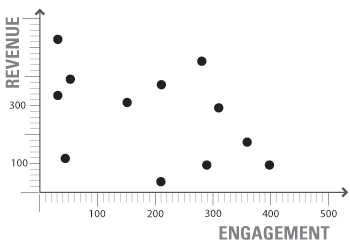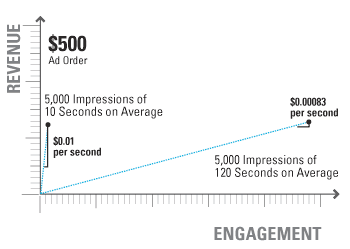
Posted by: Matt Shanahan This is the second in a series on the importance and use of unit cost of engagement in advertising. In ad-supported media, a pricing disparity is defined as an advertiser paying too much or too little for audience engagement compared to their peer advertisers. Pricing disparities are often hidden because ad rates are charged based on impression quantity (i.e., CPM pricing) which doesn’t account for actual engagement by users. Because brand recall and click-through rates are directly correlated with engagement, the unit cost of engagement (i.e., CPS pricing) can be used to uncover disparities and opportunities for digital revenue optimization. One of the easiest ways to visualize pricing disparities is to plot each ad order according to the order price and the engagement delivered for that order. The typical distribution of orders […]







